We had a rest day before the final leg of our journey south to Cadiz and decided we would visit the town of Merida, south of Caceres.
Merida, the capital of the Extremadura province was once also the capital of the Roman province of Lusitania.
We decided to take public transport, catching the local bus into Caceres and then the train from Caceres to Merida. Both methods of transport were meticulously clean, everything was on time and the tickets were reasonably priced. The bus was Euro 1.10 each for a single ticket and the return to Merida by train cost around 10.50 Euros per person for the 1 hour journey.
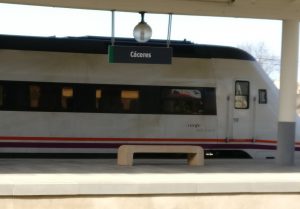
I really don’t know how we tolerate our public transport in Blighty.
Anyhow, Merida has the most extensive set of Roman remains in the whole of Spain and these ruins are scattered around the town. One wonders what might remain buried under the modern buildings throughout the rest of the city.
We didn’t have enough time to spend in Merida so weren’t able to visit all the sites. Still, gives a reason to go back there in the future! There’s also a “multi-site” ticket which for 15 Euros each gives access to all the Roman sites.
Puente Romano
The Puente Romano spans the Río Guadiana and at 792m in length with 60 granite arches, it’s one of the longest bridges built by the Romans.
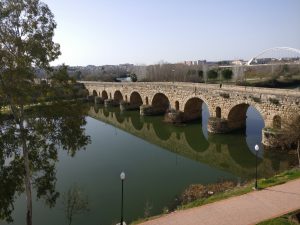
It was constructed in 25 BC when Emerita Augusta (modern-day Mérida) was founded, and then partly restored in the 17th century. The 20th-century Puente Lusitania, a sleek suspension bridge designed by Santiago Calatrava, mirrors it to the northwest.
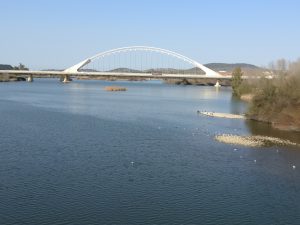
Alcazaba
This large Islamic fort was built in the mid-9th century on a site already occupied by the Romans and Visigoths, probably becoming the first ever alcazaba in Al-Andalus (muslim Spain).
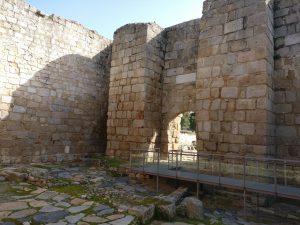
In the middle of the sprawling complex, goldfish now populate the cistern which was the source of water.
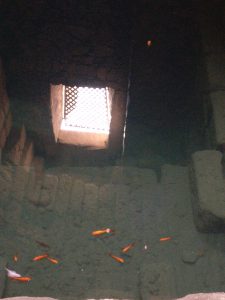
The ramparts look out over the Puente Romano and the Río Guadiana.
Teatro Romano
This is Mérida’s most spectacular Roman monument, and still fulfills its original function – by hosting performances during the Festival Internacional de Teatro Clásico in summer – the Teatro Romano is the city’s indisputable highlight.It was built in 15 BC to hold 6000 spectators.
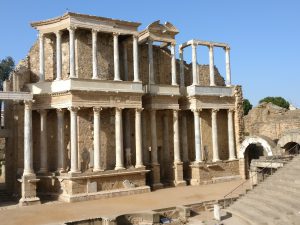
The centrepiece of the theatre is the dramatic and well-preserved two-tier stage building of Corinthian columns; the stage’s facade was inaugurated in AD 105. Statues of gods frame its central entryway, with the right-hand figure being interpreted as both the Graeco-Egyptian god Serapis and Pluto, and the left-hand one considered to be either a muse or Proserpina.
Behind lie peaceful gardens.
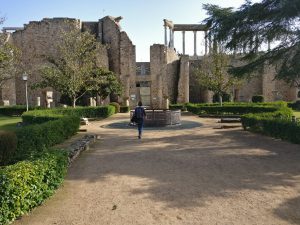
Amphitheatre
This adjoins the Teatro Romano and was built around 8 BC to seat 14000 spectators.
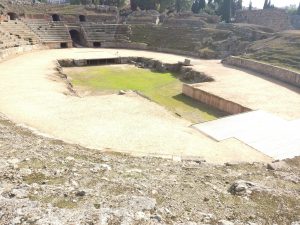
Cripta de Santa Eulalia
This basilica was built in the 5th century in honour of Mérida’s patron saint, who is said to have been martyred in the 4th century. It was then reconstructed in the 13th century. The modern-day church is closed to the public, but, beside it, a museum and excavated areas allow you to identify Roman houses, a 4th-century Christian cemetery and the original 5th-century church.
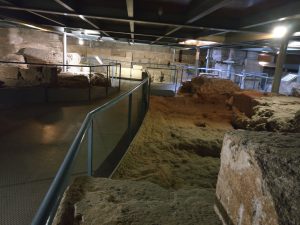
Acueducto de los Milagros
Built between the 1st century BC and the 3rd century, the 830m-long Acueducto de los Milagros once supplied Roman Mérida with water from the dam at Lago Proserpina, 6km north of town.
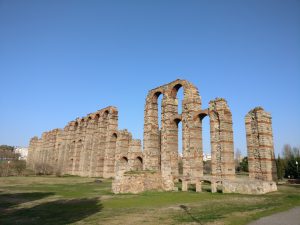
It’s now highly favoured by nesting storks.
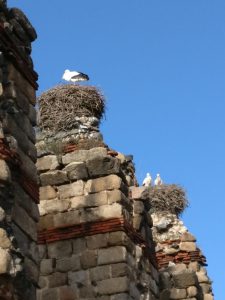
Templo de Diana
Apparently this is not named correctly, for it’s now known to have been dedicated to the Imperial cult. It was constructed on the site of an earlier Moorish building and parts were later incorporated into a 16th-century mansion built within it.
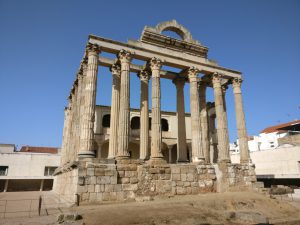
The forum’s restored Pórtico del Foro is 100m northeast up Calle de Sagas.
Dinner was late (no, actually early in Spain) and consisted of Tuna pizza at the campsite restaurant.